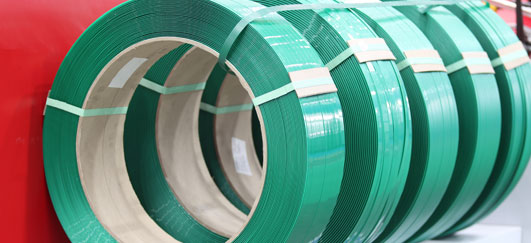In the world of packaging, ensuring the safety and security of your products during transit is paramount.
Strapping, often referred to as banding or bundling, involves securing your packages with straps or bands to prevent damage and ensure they reach their destination intact.
In this comprehensive guide, we’ll walk you through why strapping your packages is so important and explore the essential materials, tools, and steps you need to take to become a strapping pro and elevate your packaging game.
Why Strapping Matters
As much as we want to get into the essence of strapping, before diving into the how-to, we need to understand why strapping your packages is so crucial.
- Protection: Strapping prevents items from shifting or falling apart during transportation, reducing the risk of damage and ensuring that your customers receive their products in the condition that they left in.
- Security: Packages in transit can be vulnerable to theft. Strapping acts as a deterrent to this, making it far more challenging for anyone to access the contents of the packages, keeping your customers’ products safe.
- Professionalism: Properly strapped packages convey a sense of care and professionalism, showing that your business does things properly and cares about the protection and security of your customers’ items, which can enhance your brand’s image.
Now that we’ve got that out of the way, let’s get into the nitty gritty of the art of strapping.
Select the Right Strapping Material
Choosing the appropriate material is the first step in mastering the strapping process. There are three primary types of strapping materials for you to consider, and it is essential that you choose the correct one based on your package’s size, weight, and durability requirements.
- Steel Strapping: Known for its exceptional strength and durability, steel strapping is ideal for heavy and sharp edged packages and is often used in industrial settings.
- Polyester (PET) Strapping: PET strapping is strong, yet lighter and more flexible than steel. It’s suitable for a wide range of packages and is less likely to damage delicate items.
- Polypropylene (PP) Strapping: PP strapping is the most cost effective option and is best for light to medium duty applications. It’s commonly used in the retail and logistics industries.
Gather the Essential Tools
While the correct strapping material is important, to strap packages effectively, it’s essential to have the following tools.
- Tensioner: A manual or pneumatic tensioner helps you tighten the strap securely around the package.
- Sealer: A sealer is used to crimp or seal the ends of the strap together.
- Seals or Buckles: Depending on your strapping material, you’ll need seals or buckles to secure the ends of the strap.
- Strapping Dispenser: This tool helps keep your strapping material organised and prevents tangles.
Strapping Process
Now that you’ve got all the correct material and tools, you are reading to start strapping. So, let’s walk through the steps to strap your packages like a pro!
- Prepare Your Package: Ensure your package is properly sealed and ready for strapping. It should be neatly stacked and the contents secure.
- Thread the Strapping Material: Thread the strapping material through the dispenser and then through the tensioner.
- Wrap the Strap Around the Package: Position the strapping material around your package, making sure it’s snug but not too tight to avoid damaging the contents.
- Tighten the Strap: Using the tensioner, pull the strapping material tight. The tension should be firm, but not so tight that it causes damage to your package.
- Seal the Strap: Once the strap is adequately tensioned, use the sealer to crimp or seal the ends together and make sure it’s secure.
- Trim Excess Material: Cut any excess strapping material to ensure a neat and professional appearance.
- Inspect Your Work: After strapping, inspect the package to ensure the strap is secure and hasn’t damaged the contents.
Conclusion
Mastering the art of strapping is an essential skill for anyone involved in packaging. Properly strapped packages ensure your items arrive safely and in good condition.
By selecting the right strapping material, gathering the necessary tools, and following the strapping process diligently, you can elevate your packaging game and enhance the security and professionalism of your shipments.
Strapping is not just a functional aspect of packaging, it’s a mark of care and attention to detail that sets you apart in a competitive market.
At Knight Packaging Supplies we are dedicated to ensuring that you have the best materials and tools to elevate your packaging game, and that includes strapping!Head to our online store to explore our vast range of strapping materials and tools to protect your packages today!


